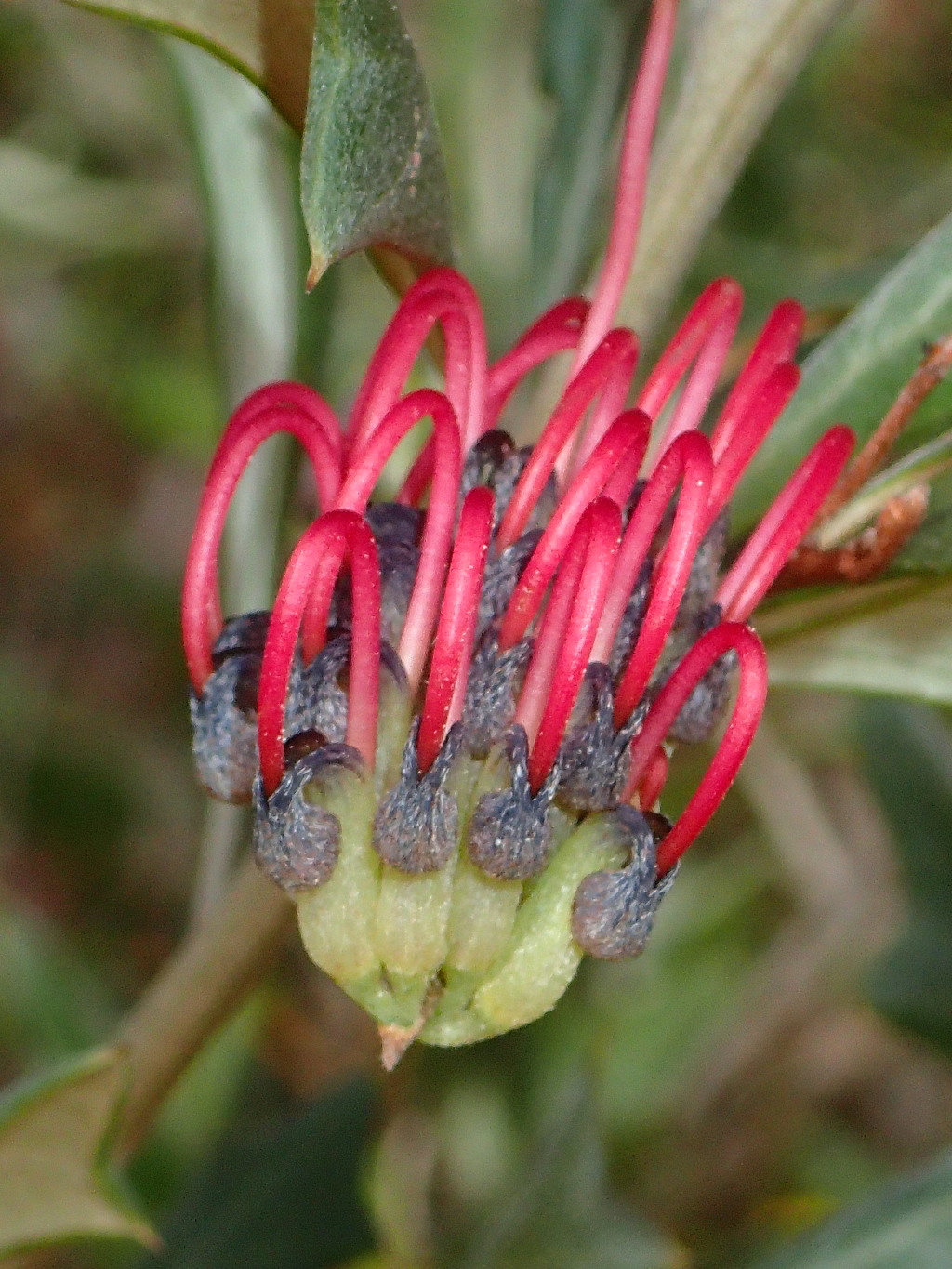Grevillea ilicifolia
(R.Br.) R.Br. Holly GrevilleaErect to spreading to prostrate or procumbent shrub, 0.25–2.0 m high, 0.5–3 m wide. Branchlet indumentum sericeous, with longitudinally aligned, appressed, straight hairs, or with strongly curled hairs. Leaves ovate to obovate in outline and often markedly cuneate in basal half, with (2–)3–5(–15) primary lobes, occasionally with secondary lobes, first few leaves on shoot usually entire and elliptic; lobing shallow in cuneate to kite-shaped leaves, or shallow to deep in herring-bone or oak-shaped leaves, leaves 18–101 mm long, 3–80 mm wide; ultimate lobes triangular to oblong-ovate or occasionally linear, 7–33 mm long, 3–18 mm wide, usually pungent; lower surface subsericeous with straight hairs, or occasionally densely tomentose with curled hairs; margin almost flat or occasionally slightly recurved. Conflorescences usually terminal, erect or decurved, usually simple, secund, 18–50 mm long; rachises subsericeous to tomentose; perianth green to cream at base and mauve above, outer surface open-subsericeous or with scattered appressed hairs, or tomentose or glabrous, inner surface glabrous; pistil 19.5–25 mm long, ovary stipitate, subsericeous to tomentose, style pink to red occasionally orange or pale yellow, glabrous, style-end dorsally convex, with a gradual taper from the pollen presenter to the style, pollen presenter oblique. Fruits subsericeous to tomentose, with red-brown longitudinal markings. Flowers mainly Jun.–Feb.
LoM, MuM, Wim, VVP, VRiv, RobP, MuF, GipP, Gold, CVU, GGr, DunT. Also SA. Scattered in western inland parts of the State, with isolated easterly records from as far east as Swan Hill (but not since 1890) and Dunolly. Grows in mallee, heath, woodland or shrubland associations, in sandy soils.
Grevillea ilicifolia normally has the hairs of the leaf undersurface, floral rachis and perianths straight and appressed. Various populations in western Victoria and South Australia include plants with tomentose leaf undersurfaces, not apparently correlated with leaf form except for plants from the Wyperfeld National Park-Hattah Lakes area which have all the above parts consistently tomentose with curled hairs.
Two subspecies are recognised, both in Victoria, with intermediates between the two subspecies present.
Makinson, R.O. (1996). Grevillea. In: Walsh, N.G.; Entwisle, T.J., Flora of Victoria Vol. 3, Dicotyledons Winteraceae to Myrtaceae, pp. 845–870. Inkata Press, Melbourne.
 Spinning
Spinning


